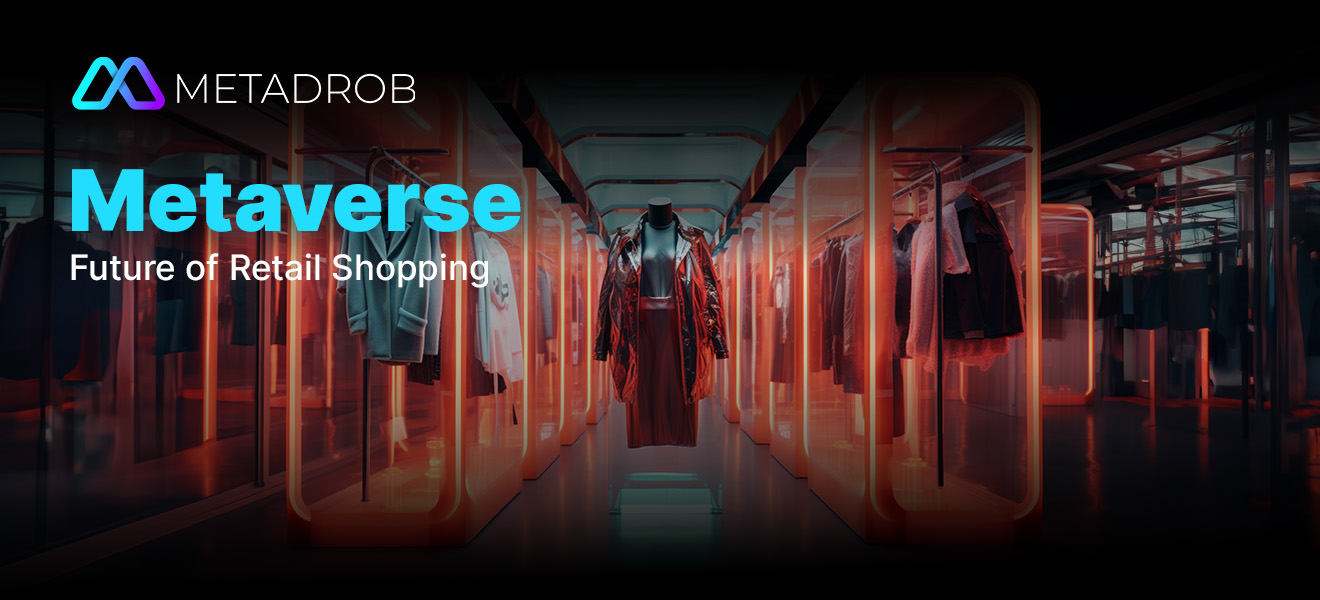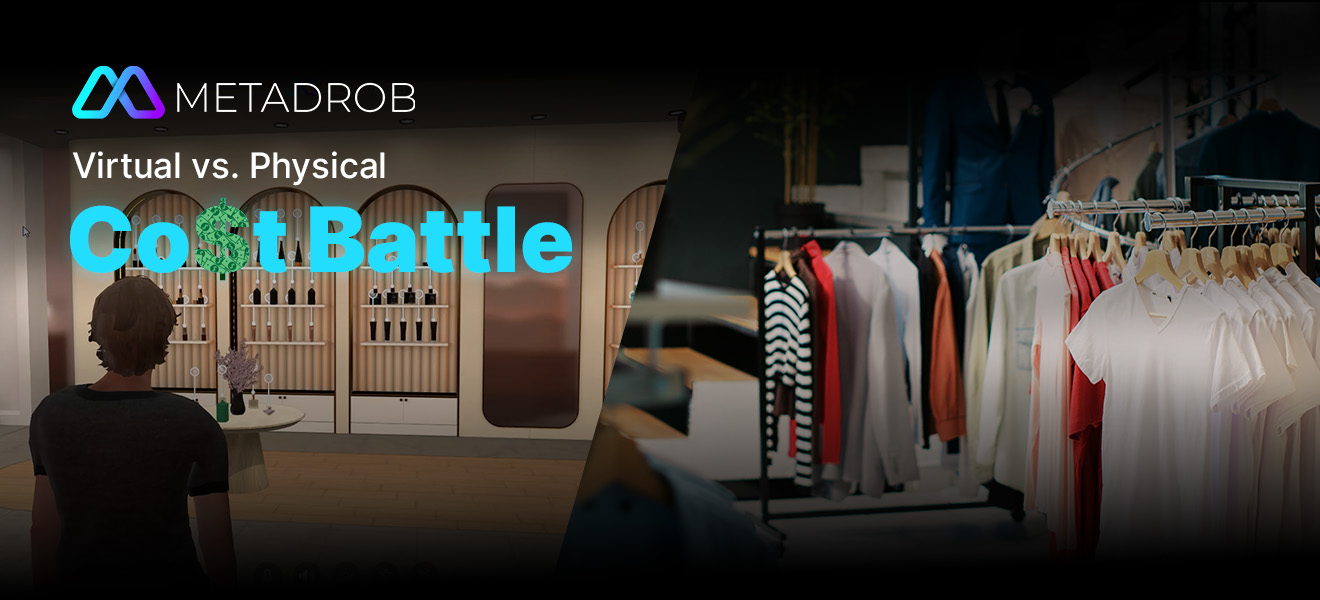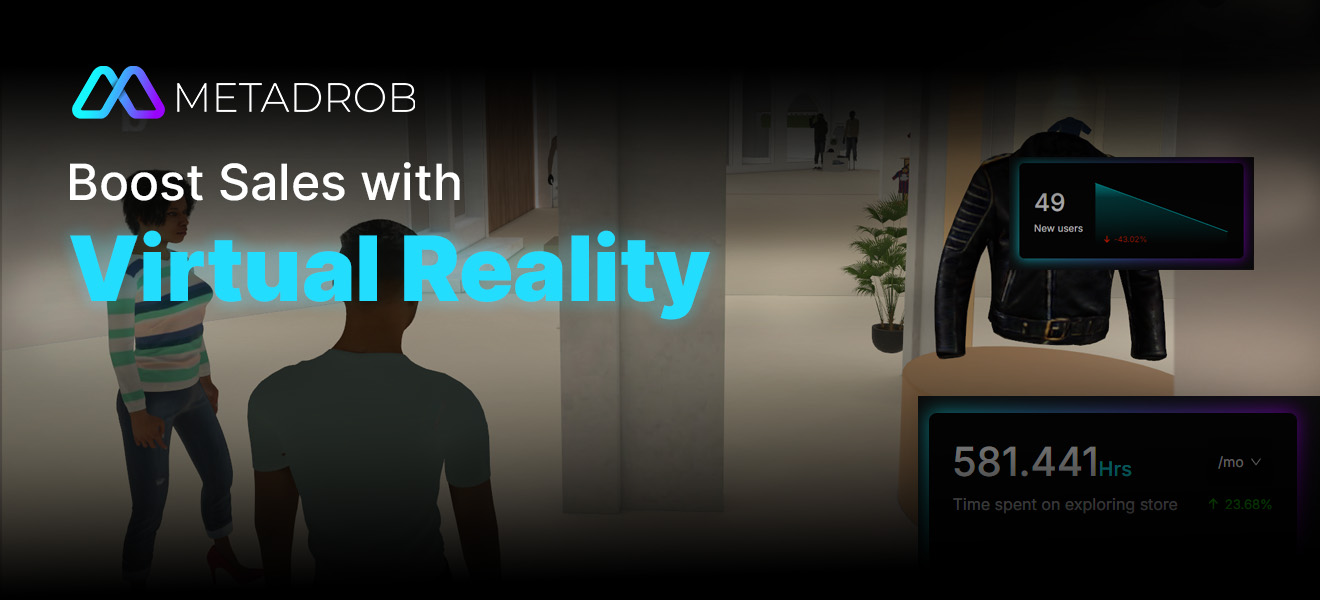Boosting Customer Engagement With Metaverse Shopping Experiences

Do you know that 10.6% of the overall retail sales, which amounts to $428 billion in merchandise, was returned by customers last year? Things are even worse for eCommerce as the sector witnesses around 15% to 40% returns yearly.
Based on the statistics, it can be said that a large number of returns is among the most significant problems of e-commerce. Consumers find that they are given substandard products that do not meet their required standards, which results in dissatisfaction and returns.
This can be problematic since online customers cannot physically check products before purchasing. However, a new generation of immersive technologies is changing such rules— virtual and augmented reality (VR and AR).
AR can, therefore, help bridge the gap between online shopping and shopping in physical stores, as buyers can see things in their settings. Customers can use this to lower their risk of returns and also make better choices regarding what they want to purchase.
Indeed, research has indicated that retailers utilizing 3D AR visualization have experienced a notable drop in returns—up to 40% in some cases. Let’s explore how AR and other immersive technologies might transform online shopping and assist your company in reducing returns.
Understanding Immersive Technologies
Augmented Reality (AR)
Augmented reality overlays data from the digital world on the real environment and, therefore, creates a unique blend. AR in e-commerce can be utilized for:
- Visualize Items: This feature helps customers preview what things look like in their spaces or assists them in making decisions.
- Try-On Features: AR allows customers to try the apparel and accessories before buying them.
- Virtual Showroom: Virtual stores can be created by online retailers where consumers can check the products and interact with them as if they were in real life.
Virtual Reality (VR)
Users can enter a new universe using VR, which produces a completely immersive digital experience. VR in e-commerce can be utilized for:
- Experience Products: Users can virtually interact with merchandise by examining a virtual store or trying on furniture.
- Product Customization: Consumers may make real-time customizations using virtual reality and instantly see the results.
- Immersive Buying Environments: Buying can be done online, so the shops can create truly inspiring environments that give the essence of actual shops.
Through AR and VR, e-commerce companies might introduce their clients to a more satisfying shopping experience, reducing the return rates.
The Impact of Immersive Technologies on Return Rates
Refunds and customer dissatisfaction are usually the consequences of product non-conformity. On the other hand, immersive technologies, particularly VR and AR, offer a tangible solution to the problem.
Product Visualization: Seeing is Believing
AR and VR can revolutionize customers’ online purchasing experience by providing them with accurate and detailed representations of products. Customers are no longer limited to using photographs and words to interact with products; they can do so more realistically.
People can use AR to place a 3D model of an object on top of the existing environment to better understand the product’s size, proportions, and how it fits in a given space.
With this kind of improved product visualization, returns are by no means in any way possible. Customers are more likely to make sound decisions whenever they can look at the item’s appearance in their context.
To ensure that a piece of furniture fits their current interior design, a consumer buying it can use augmented reality to visualize it in their living room.
Personalized Shopping Experiences: Tailored to Your Tastes
Besides, immersive technologies can create very individualistic purchasing experiences. Conversely, e-commerce platforms can offer personalized suggestions and recommendations based on the users’ behavior and tastes.
For instance, the application of virtual reality (VR) can enable the creation of virtual showrooms in the specific buyer’s style.
This way, customers are exposed to things they could not have looked for on their own, making purchases more pleasant. Consumers are less likely to return the products when they think that their voices and complaints are being heard.
Customer Engagement and Satisfaction: Building Stronger Relationships
Moreover, there are benefits relating to enhancing the happiness and engagement of the clients. E-commerce organizations might be able to develop a better and happier client connection by enhancing the buying experience.
AR can be applied to such use cases as presenting a virtual fitting or creating a product demonstration. It is the general perception and belief that customers will remain loyal to that particular brand and even recommend it to their friends and relatives if they had a good experience when purchasing the particular brand. This may lead to an increase in sales while decreasing its returns.
Therefore, it is possible to conclude that such technologies as AR and VR, which are used in ecommerce, will significantly reduce the rates of return. They can help businesses design an appealing and satisfying online buying experience through accurate presentation of products, personalizations of the shopping process, and better customer engagement.
How To Use Immersive Technologies To Reduce Ecommerce Return Rates
- Provide AR Product Visualization: Let consumers use AR to see products in their environments. This aids in their comprehension of the objects’ dimensions, weight, and fit before purchase.
- Offer Features For Virtual Try-Ons: Provide virtual try-on options for items such as apparel and eyewear so that clients can see how the items appear.
- Make Engaging Product Displays: Use VR to produce interactive product demos that more effectively highlight the characteristics and advantages of goods.
- Provide Customized Options: Let clients have an opportunity to apply AR or VR tools to modify something to receive what they need.
- Provide Crisp Images And 3d Models: Ensure that the 3D models and photos of products are of the best quality to enable customers to get a real picture of the products.
- Ensure Mobile Device Optimizations: To capture the expanding populace of mobile buyers, ensure that the subsequent compelling experiences are mobile-compatible.
- Integrate Immersive Technology Into Your Online Store: Ensure users can have a smooth experience when integrating immersive technology into the existing e-commerce platform.
- Observe And Evaluate User Behavior: Learn how your users engage with immersive technologies and identify issues that must be addressed to optimize your strategy.
Now that you know how to start using immersive technologies for your eCommerce brand, you can enhance customer experience, reduce the rates of returns, and boost revenue.
Challenges of Immersive Technologies In E-commerce
Techniques like VR and AR can potentially revolutionize a buyer’s experience while shopping for products online. However, they also have some issues that need to be discussed and solved among them, there are the following ones:
- Hardware Requirements: One of them is the requirements for the used hardware. Often, AR and VR may require powerful hardware like a new generation smartphone processor or a particular VR headgear. As for the current solution, some customers may consider this a disadvantage of using the application if their devices are older or less costly.
- Challenges Related to User Experience: It becomes challenging to guarantee that acquiring the product will be a seamless and fun process as consuming it will be. It was also seen that the overall satisfaction from using AR or VR could be greatly impacted by such factors as latency, tracking precision, and ergonomics. Any form of pain or nuisance that created the technicalities could be annoying and make customers shy away from virtual shopping next time.
Future of Immersive Technologies In E-commerce
Thanks to the metaverse, considering the combination of the digital and the physical world, e-commerce will change significantly. Leading this change are VR and AR, which are immersive technologies that allow for varying degrees of presence in synchronous contexts.
The big-box retailers are beginning to consider what the metaverse may offer. Amazon’s Room Decorator lets customers visualize home decor items in their rooms and removes the risks associated with online purchases. Using Warby Parker’s virtual fitting tools, customers can try the glasses virtually in order to get a better purchasing experience. Some recognized brands like Gucci and Adidas also enter the metaverse through virtual stores.
Immersion technologies are expected to become even more important in e-commerce as the metaverse develops. The infinite possibilities range from social shopping experiences and personalized suggestions to virtual showrooms and interactive product demos. These immersive technologies can lower return rates and increase sales by giving consumers more believable and interesting shopping experiences.
Metadrob’s Virtual Store Theme
Metadrob is dedicated to helping online retailers realize the benefits of immersive technologies. Our platform provides a plethora of tools and resources to explore, implement, and optimize AR and VR solutions for your online store.
You may lower your return rates significantly, raise client happiness, and spur company expansion by partnering with Metadrob. Our extensive selection of virtual store themes has everything you expect from an immersive technology like AR and VR. Each theme is designed to help you reduce your return rates effortlessly. To build a virtual reality shop for your brand, you can visit Metadrob and gather more information.
Conclusion
Virtual and augmented reality are two examples of immersive technologies that provide an effective solution for the issue of e-commerce returns. By providing more tailored and realistic shopping experiences, these technologies can greatly lower the probability of making an incorrect purchase. So, it’s time for online merchants to adopt these immersive technologies and enjoy the benefits of a more customer-focused and effective business.
Connect with Metadrob
Ready to take the first step towards unlocking opportunities, realizing goals, and embracing innovation? We're here and eager to connect.

+91 966-004-4020






